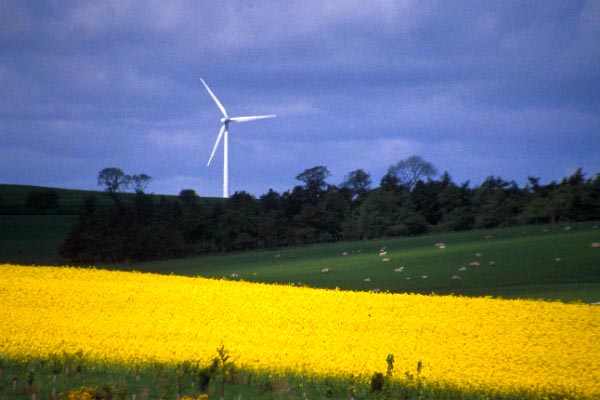The following is a short overview of renewable energy as utilized in the Philippines
Wind is particularly popular in the Ilocos region due to the wind regime in the area. Northwind operates a 33MW wind farm in Bangui Bay, Ilocos Norte. The rule of thumb cost per MW at the moment is $2.5 million dollars per megawatt. Based on studies conducted by the US National Renewable Energy Laboratory and the Department of Energy, the country has vast renewable energy potential, including 76,000 MW of wind capacity.
According to a newspaper report, three companies were awarded four wind energy service contracts: Energy Development Corp. for its planned 86-MW wind farm in Burgos, Ilocos Norte; Northern Luzon UPC Asia Corp. for its 50-MW wind project in Pagudpud, Ilocos Norte; and PetroEnergy Resources Corp., which bagged two contracts for a 30-MW project in Sual, Pangasinan and a 30-MW project in Nabas, Aklan. Energy Logics Philippines Inc.’s pre-commercial contract for a 120-MW wind farm in Pasuquin, Ilocos Norte, was converted to a wind energy service contract.[1]
Cagayan de Oro utility CEPALCO has a 1MW solar plant that they plan to upgrade to 14MW. Silicon-based solar photovoltaics are being manufactured in the Philippines by US companies SunPower and Solaria, although their local manufacturing presence has not really resulted in an increased availability of solar photovoltaics locally; most of these parts are exported and any need for solar cells still requires importation into the Philippines.
Solar thermal, while attractive in desert type areas, has not attracted much attention in the Philippines due to sometimes diffuse and cloudy skies.
Geothermal continues to be a traditional renewable energy resource in areas like Albay province. Currently, the Aboitiz group operates a 458MW combined geothermal facility in Tiwi and Makban, bought at roughly less than $1M per megawatt. Steam is currently supplied by Chevron Geothermal Philippines Holdings, Inc.[2]
Cogeneration is popular for large factories and heat producing environments. Large companies such as Unilever, Procter & Gamble and others have been employing it for some time.
Another non-RE resource that has attracted significant attention, is biofuels, particularly with the mandate to add 10% ethanol to gasoline (E10) will be in force by 2011 from the current 5%. This has been enabled in part by the presence of mixed use engines, particularly from Ford, that allow higher ethanol blends of up to 80%. Recently, the Philippine government renewed ties with Brazil to strengthen cooperation in biofuels. Significant land has been devoted to the planting of biofuels. In non-agricultural areas, a plant imported from India, jathropa, has attracted significant attention here. However, jathropa can only be planted in non-agricultural areas, as the plant, particularly the seeds where the oil is derived, is poisonous. In addition, the Department of Energy, while still evaluating jathropa, is mainly focused at the moment on using Coco Methyl Ester (CME) as the biofuel blend for diesel.
One issue that has been brought up is the standards for these biofuel additives, as car companies and oil companies have expressed concern about damage to engines if the quality of supplied biofuels is not properly addressed.[3] To help verify this, an engine testing center has been set up at UP Diliman, with a grant from an automotive company, precisely to test these types of concerns.
More exotic sources like algae are still in the experimental evaluation stage. The Ateneo de Manila University as well as private companies like Alsons Aquaculture are conducting early studies in this area.
The Biofuels Act of 2006 mandates that diesel be blended with biodiesel at 2% starting Feb. 2009, while gasoline be blended with ethanol at 10%. The projection is that by 2011, the demand will be at 594 million liters of biofuel while by 2015, it will reach 721 million liters. The current capacity last month was only 39 million liters combined. It is estimated that the demand for sugarcane will be at 10.3 million tons, for sweet sorghum at 14.4 million tons, and for cassava at four million tons. Estimated land required is 243,000 hectares, to meet the demand
Share your industry press now!
Are you a PR agency or sustainability-focused organization? Join the World of Renewables network FREE today and gain exclusive access to our platform to promote your business, share the latest industry news, and connect with a global audience of 700,000+ renewable energy professionals.
Register Now to start posting your updates and showcase your expertise to a highly engaged, environmentally-conscious community.
Find out more about our Content Partnership Programs.*2024 AWARD WINNER* Websites & Mobile Sites, Webby Winner, Peoples Voice 2024












